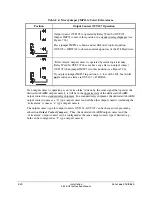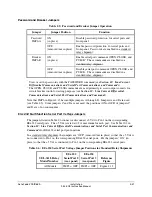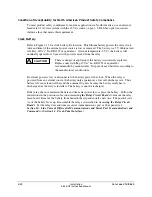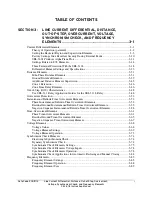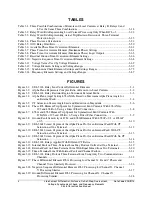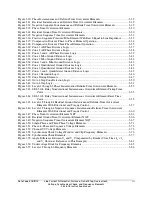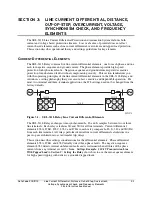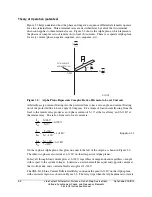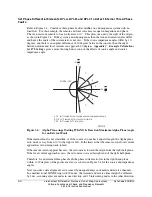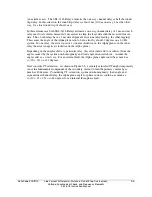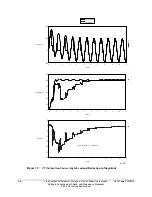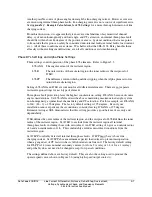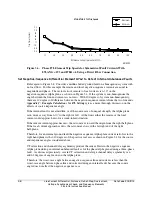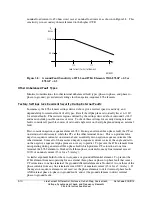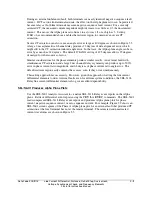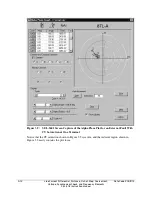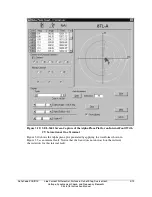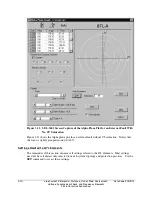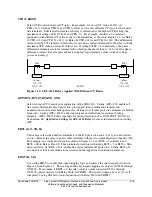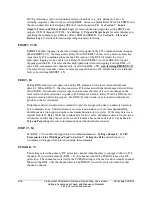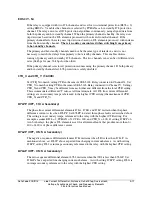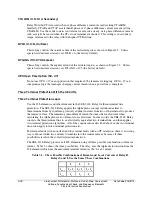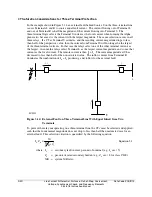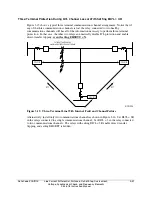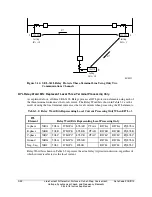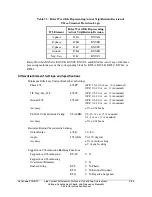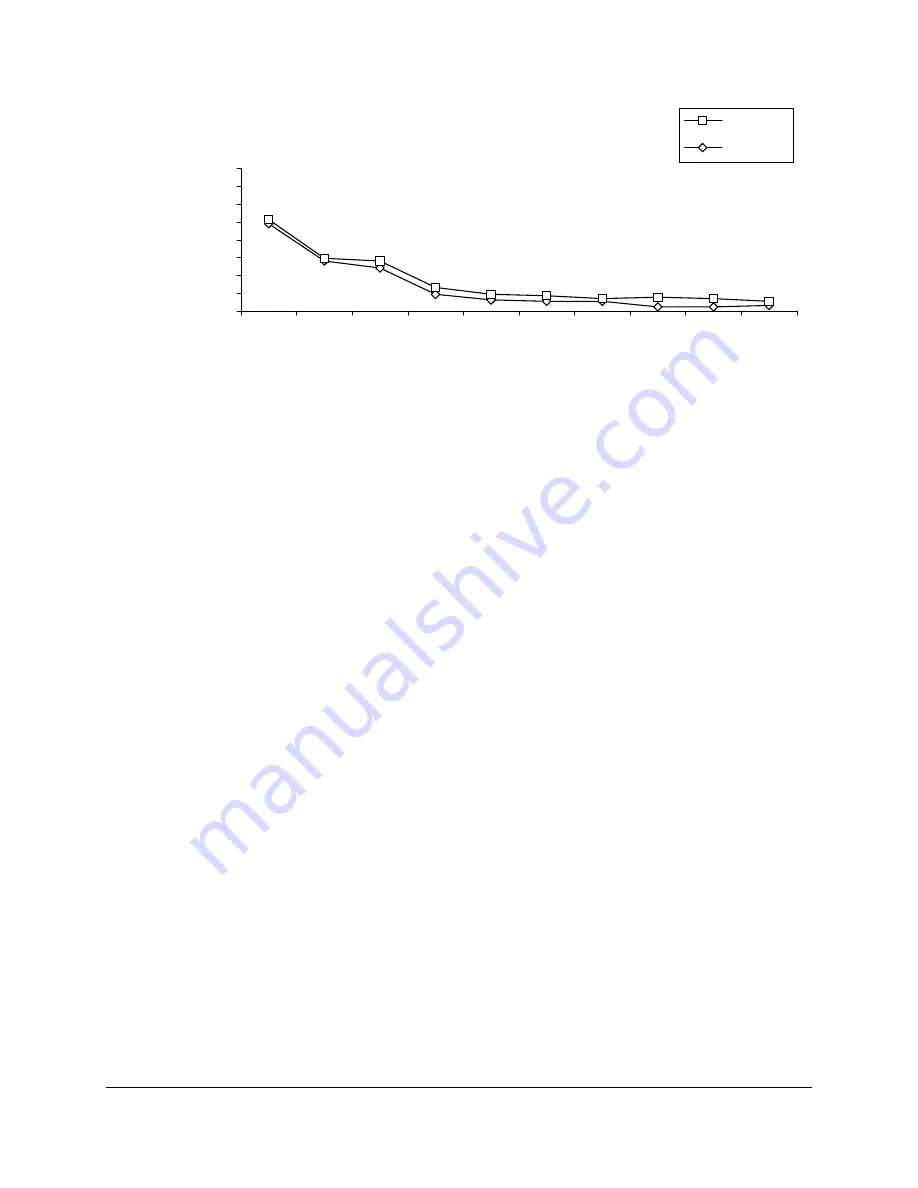
3-8
Line Current Differential, Distance, Out-of-Step, Overcurrent,
Date Code 20011112
Voltage, Synchronism Check, and Frequency Elements
SEL-311L Instruction Manual
87LA, 87LB, 87LC Trip Speed
0.6
0.8
1.0
1.2
1.4
1.6
1.8
2.0
2.2
1.2
2.0
3.0
4.0
5.0
6.0
7.0
8.0
9.0
10.0
Difference Current (per unit of 87LPP)
Trip
Time
(C
ycles)
Maximum
Minimum
M311L090
Figure 3.6: Phase 87L Element Trip Speeds for Symmetrical Fault Currents With
87LANG = 195 and 87LR = 6 Using a Direct Fiber Connection
Set Negative-Sequence Differential Element 87L2 to Detect Internal Unbalanced Faults
Refer again to Figure 3.4. Consider a midline bolted ground fault on a homogenous system with
no load flow. For this example the remote and local negative-sequence currents are equal in
magnitude and phase. The vector ratio of remote to local currents is 1
∠
0° on the
negative-sequence Alpha plane, as shown in Figure 3.4. If the system is non-homogenous the
angle between the line-end currents is not zero. With 10 degrees of system non-homogeneity,
there are 10 degrees of difference between the negative-sequence currents from the two line ends.
Appendix J: Example Calculations for 87L Settings
gives a more thorough discussion on the
effects of source impedance angle.
If the internal fault is not at midline, or if the sources are of unequal strength, the Alpha plane
ratio moves away from 1
∠
0° to the right or left. At the limit, either the remote or the local
current could approach zero for a weak-infeed situation.
If the remote current approaches zero, the ratio moves toward the origin from the right half-plane.
If the local current approaches zero, the ratio moves toward the far right end of the right
half-plane.
Therefore, for an internal ground fault the negative-sequence Alpha plane current ratio lies in the
right hand plane with +/-10 degrees of the positive real axis as shown in Figure 3.4 for the source
and impedance angles considered above.
CT saturation and channel delay asymmetry produce the same effects in the negative-sequence
Alpha plane during an internal unbalanced fault as for the phase Alpha plane during a three-phase
fault. As discussed previously, severe CT saturation and a large channel delay asymmetry can
add 62 degrees of angle error on the Alpha plane.
Therefore, the worst-case angle between negative-sequence line end currents is less than the
worst-case angle between phase line end currents during an internal fault, because the source
angle does not affect the negative-sequence case.
Summary of Contents for SEL-311L
Page 6: ......
Page 8: ......
Page 26: ......
Page 54: ......
Page 144: ......
Page 216: ......
Page 252: ......
Page 302: ......
Page 338: ......
Page 480: ......
Page 484: ......
Page 486: ......
Page 502: ......
Page 532: ...12 28 Standard Event Reports and SER Date Code 20010625 SEL 311L Instruction Manual 4 ...
Page 552: ......
Page 554: ......
Page 574: ......
Page 576: ......
Page 596: ......
Page 602: ......
Page 628: ......
Page 656: ......
Page 662: ......
Page 664: ......
Page 688: ......
Page 700: ......
Page 716: ......
Page 722: ......
Page 734: ......

